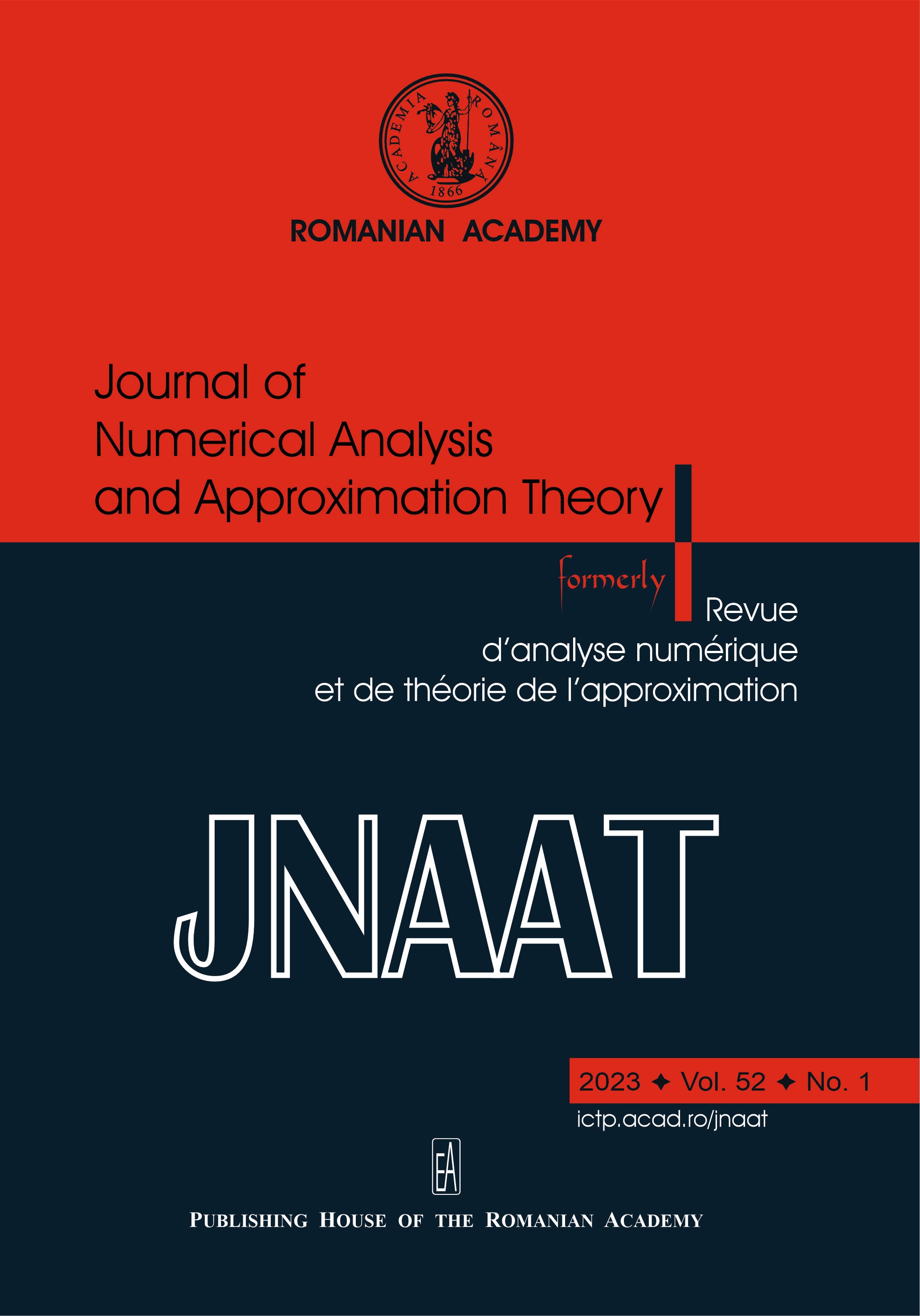Solving ill-posed Helmholtz problems with physics-informed neural networks
DOI:
https://doi.org/10.33993/jnaat521-1305Keywords:
ill-posed problems, inverse problems, unique continuation, data assimilation, Helmholtz equation, physics-informed neural networksAbstract
We consider the unique continuation (data assimilation) problem for the Helmholtz equation and study its numerical approximation based on physics-informed neural networks (PINNs). Exploiting the conditional stability of the problem, we first give a bound on the generalization error of PINNs. We then present numerical experiments in 2d for different frequencies and for geometric configurations with different stability bounds for the continuation problem. The results show that vanilla PINNs provide good approximations even for noisy data in configurations with robust stability (both low and moderate frequencies), but may struggle otherwise. This indicates that more sophisticated techniques are needed to obtain PINNs that are frequency-robust for inverse problems subject to the Helmholtz equation.
Downloads
References
G. Alessandrini, L. Rondi, E. Rosset, and S. Vessella, The stability for the Cauchy problem for elliptic equations, Inverse Problems, 25 (2009), p. 123004, https://doi.org/10.1088/0266-5611/25/12/123004. DOI: https://doi.org/10.1088/0266-5611/25/12/123004
S. M. Berge and E. Malinnikova, On the three ball theorem for solutions of the Helmholtz equation, Complex Anal. Synerg., 7 (2021), pp. 1-10, https://doi.org/10.1007/s40627-021-00070-3. DOI: https://doi.org/10.1007/s40627-021-00070-3
E. Burman, Stabilized finite element methods for nonsymmetric, noncoercive, and ill-posed problems. Part I: Elliptic equations, SIAM J. Sci. Comput., 35 (2013), pp. A2752-A2780, https://doi.org/10.1137/130916862 DOI: https://doi.org/10.1137/130916862
E. Burman, G. Delay, and A. Ern, A hybridized high-order method for unique continuation subject to the Helmholtz equation, SIAM J. Numer. Anal., 59 (2021), pp. 2368-2392, https://doi.org/10.1137/20M1375619 DOI: https://doi.org/10.1137/20M1375619
E. Burman, P. Hansbo, and M. G. Larson, Solving ill-posed control problems by stabilized finite element methods: an alternative to Tikhonov regularization, Inverse Problems, 34 (2018), p. 035004, https://doi.org/10.1088/1361-6420/aaa32b DOI: https://doi.org/10.1088/1361-6420/aaa32b
E. Burman, M. Nechita, and L. Oksanen, Unique continuation for the Helmholtz equation using stabilized finite element methods, J. Math. Pures Appl., 129 (2019), pp. 1-22, https://doi.org/10.1016/j.matpur.2018.10.003 DOI: https://doi.org/10.1016/j.matpur.2018.10.003
R. H. Byrd, P. Lu, J. Nocedal, and C. Zhu, A limited memory algorithm for bound constrained optimization, SIAM J. Sci. Comput., 16 (1995), pp. 1190-1208, https://doi.org/10.1137/0916069 DOI: https://doi.org/10.1137/0916069
P. Escapil-Inchauspé and G. A. Ruz, Hyper-parameter tuning of physics-informed neural networks: Application to Helmholtz problems, preprint arXiv:2205.06704, 2022
T. G Grossmann, U. J. Komorowska, J. Latz, and C.-B. Schönlieb, Can physics-informed neural networks beat the finite element method?, preprint arXiv:2302.04107, 2023
T. Hrycak and V. Isakov, Increased stability in the continuation of solutions to the Helmholtz equation, Inverse Problems, 20 (2004), pp. 697-712, https://doi.org/10.1088/0266-5611/23/4/019 DOI: https://doi.org/10.1088/0266-5611/20/3/004
V. Isakov, Inverse problems for partial differential equations, Springer, 3rd ed., 2017, https://doi.org/10.1007/978-3-319-51658-5 DOI: https://doi.org/10.1007/978-3-319-51658-5
D. P. Kingma and J. Ba, Adam: A method for stochastic optimization, preprint arXiv:1412.6980, 2014
L. Lu, X. Meng, Z. Mao, and G. E. Karniadakis, DeepXDE: A deep learning library for solving differential equations, SIAM Review, 63 (2021), pp. 208-228, https://doi.org/10.1137/19M1274067 DOI: https://doi.org/10.1137/19M1274067
S. Mishra and R. Molinaro, Estimates on the generalization error of physics-informed neural networks for approximating a class of inverse problems for PDEs, IMA Journal of Numerical Analysis, 42 (2022), pp. 981-1022, https://doi.org/10.1093/imanum/drab032 DOI: https://doi.org/10.1093/imanum/drab032
M. Nechita, Unique continuation problems and stabilised finite element methods, PhD thesis, University College London, 2020, https://discovery.ucl.ac.uk/id/eprint/10113065
M. Raissi, P. Perdikaris, and G. E. Karniadakis, Physics-informed neural networks: A deep learning framework for solving forward and inverse problems involving nonlinear partial differential equations, Journal of Computational physics, 378 (2019), pp. 686-707, https://doi.org/10.1016/j.jcp.2018.10.045 DOI: https://doi.org/10.1016/j.jcp.2018.10.045
Published
Issue
Section
License
Copyright (c) 2023 Mihai Nechita

This work is licensed under a Creative Commons Attribution 4.0 International License.
Open Access. This article is distributed under the terms of the Creative Commons Attribution 4.0 International License, which permits unrestricted use, distribution, and reproduction in any medium, provided you give appropriate credit to the original author(s) and the source, provide a link to the Creative Commons license, and indicate if changes were made.
How to Cite
Funding data
-
European Social Fund
Grant numbers POCU/993/6/13/153310










